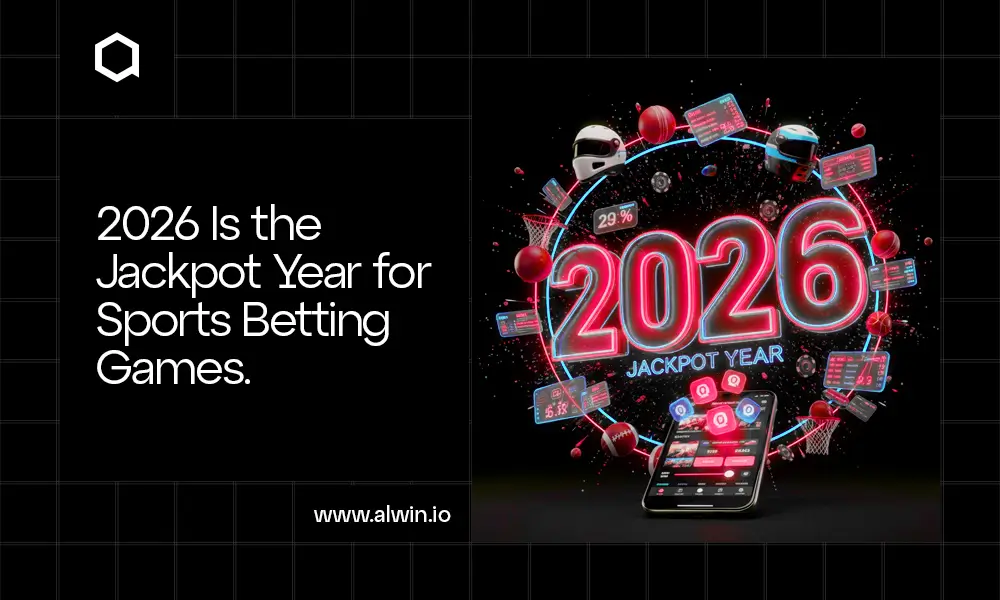In today's digital landscape, crypto tokens are reshaping how we view and use digital assets.
These crypto tokens vary widely, from utility tokens for decentralized apps (dApps) to security tokens representing real-world assets like real estate and stocks.
Beyond their technical aspects, crypto tokens have transformative potential across industries and economies.
Whether you aim to fund a project through an Initial Token Offering (ITO) or explore new avenues in blockchain technology, this walkthrough equips you with essential knowledge for navigating the exciting realm of crypto token creation.
This guide offers a clear, step-by-step approach to creating crypto tokens, the fundamentals of crypto tokens, and their significance in today's market.
7 Steps to Create Your Crypto Token
Here's a detailed, step-by-step guide:
Step 1: Define The Purpose Of Your Cryptocurrency Token
The first and most crucial step in creating a crypto token is clearly defining its purpose.
This step lays the foundation for all the subsequent decisions you make in the token creation process.
When defining the purpose of your token, consider the following questions:
- What Problem Does Your Token Solve?
- How Will Your Token Benefit Its Users?
- What Value Does Your Token Bring To The Ecosystem?
- What Are The Unique Features Or Characteristics Of Your Token?
- What Are The Potential Risks And Challenges Associated With Your Token?
Once You’ve got a clear vision for all the above-mentioned questions the next step is to choose the blockchain platform on which you will build it.
Step 2: Choose a Blockchain Platform
The blockchain platform you select will have a significant impact on the technical aspects of your token, as well as its compatibility with existing blockchain-based applications and services.

When choosing a blockchain platform, consider the following factors:
- Scalability: Can it handle high transaction volumes and users without performance issues?
- Speed: Fast transaction processing enhances user experience and efficiency.
- Tools & Resources: The availability of quality dev tools, libraries, and resources speeds up development.
- Community & Ecosystem: A robust, active community and ecosystem provides valuable support and integration opportunities.
- Security: A strong security track record and measures to protect against vulnerabilities are essential.
- Compliance: Ensure the platform aligns with relevant laws and regulations to avoid legal and operational issues.
Some of the most popular blockchain platforms for creating tokens include Ethereum, Binance Smart Chain, Tron, and Polygon.
Each platform has its own strengths and weaknesses, so it's important to carefully evaluate your specific requirements and choose the one that best fits your token's purpose and long-term goals.
Step 3: Select a Token Standard
After choosing a blockchain platform, the next step is to select a token standard that aligns with your token's purpose and the platform you have chosen.
Token standards define the rules and functions that your token must follow, ensuring compatibility with existing blockchain-based applications and services.
The most common token standards are:
ERC-20: The most widely used standard, primarily for Ethereum-based tokens. It defines rules for fungible tokens with a fixed supply, allowing transfers and balance queries.
BEP-20: The token standard for Binance Smart Chain, similar to ERC-20 but optimized for faster transactions and lower fees.
TRC-20: The standard for the Tron blockchain, enabling the creation and management of tokens with high speed and low fees.
When selecting a token standard, consider the following factors:
- Compatibility with the chosen blockchain platform
Ensure that the token standard you choose is compatible with the blockchain platform you have selected in Step 2.
- Existing ecosystem and integration opportunities
Consider the size and activity of the ecosystem surrounding the token standard, as well as the availability of existing applications and services that support it.
- Technical requirements and features
Evaluate the specific technical requirements and features of each token standard, such as the ability to handle complex token logic or the availability of development tools and libraries.
- Community support and adoption
Consider the level of community support and adoption for each token standard, as this can impact the long-term viability and success of your token.
Once you have selected the blockchain platform and token standard, the next step is to design your token.
Step 4: Design Your Cryptocurrency Token
Token Design involves defining the token's name, symbol, total supply, and distribution model.

The design of your token should align with its purpose and the needs of your target audience.
When designing your token, consider the following factors:
- Name and Symbol: Choose a memorable name and unique symbol that reflects your token's purpose and brand.
- Total Supply: Determine the total number of tokens based on factors like purpose, target market size, and desired scarcity.
- Decimals: Specify the number of decimal places, especially for large supply or microtransaction tokens.
- Distribution: Decide how to distribute tokens, considering decentralization, user engagement, and legal implications.
- Utility: Define specific use cases and utility within your ecosystem, such as exclusive content access or governance participation.
- Economics: Develop a token economy that incentivizes desired user behavior and ensures long-term sustainability through mechanisms like burning, staking, or reserves.
- Roadmap: Create a roadmap outlining key milestones and development phases to manage expectations and demonstrate your long-term vision.
By carefully designing your token, you can ensure that it aligns with its purpose, meets the needs of your target audience, and contributes to the overall success of your project.
Remember to keep your token design simple, clear, and easy to understand to maximize its appeal and adoption in the market.
Step 5: Develop and Code the Smart Contract
After designing your token, the next step is to develop and code the smart contract that will govern its behavior.
 Remix IDE easy to code online platform for writing smart contracts
Remix IDE easy to code online platform for writing smart contracts
A smart contract is a self-executing contract with the terms of the agreement between buyer and seller being directly written into lines of code.
When developing and coding the smart contract for your token, consider the following steps:
- Choose a Smart Contract Development Framework
Select a smart contract development framework that aligns with the blockchain platform and token standard you have chosen.
Popular options include Solidity (for Ethereum-based tokens), Vyper (an alternative Ethereum-based language), and Truffle (a development framework for Ethereum-based projects).
- Understand the Token Standard's Requirements
Familiarize yourself with the specific requirements and functions defined by the token standard you have selected (e.g., ERC-20, BEP-20, TRC-20).
This will ensure that your smart contract adheres to the necessary rules and functions.
- Implement the Token's Core Functionality
Develop the core functionality of your token, such as the ability to transfer tokens, query balances, and mint or burn tokens. Ensure that these functions are implemented correctly and securely.
- Incorporate Additional Features (Optional)
Depending on your token's purpose and design, you may want to incorporate additional features, such as token locking, vesting schedules, or the ability to pause token transfers.
- Implement Access Control and Permissions
Establish appropriate access control and permission mechanisms to ensure that only authorized parties can perform critical operations, such as minting or burning tokens.
- Test the Smart Contract
Thoroughly test your smart contract on a testnet to ensure that it functions as intended and is free from vulnerabilities.
This may involve using automated testing frameworks, manual testing, and security audits.
- Optimize Gas Efficiency
Optimize the gas efficiency of your smart contract to minimize the cost of transactions and ensure a smooth user experience.
- Document the Smart Contract
Thoroughly document the smart contract's functionality, including its purpose, features, and any relevant technical details. This will facilitate future maintenance and updates.
When developing and coding the smart contract, it's important to follow best practices for secure smart contract development, such as using well-tested libraries, implementing input validation, and adhering to the principle of least privilege.
Additionally, consider engaging the services of a reputable smart contract auditing firm to ensure the security and reliability of your token's smart contract.
Step 6: Test the Crypto Token on a Testnet
Before deploying your token on the mainnet, thoroughly test it on a testnet.

A testnet is a separate blockchain network used for testing and debugging purposes, allowing you to identify and fix any issues with your token before it goes live.
When testing your token on a testnet, consider the following steps:
- Choose a Testnet
Select a testnet that is compatible with the blockchain platform and token standard you have chosen.
Popular options include Rinkeby, Ropsten, and Kovan for Ethereum-based tokens and Testnet for Binance Smart Chain and Tron-based tokens.
- Deploy the Token on the Testnet
Deploy your token's smart contract on the chosen testnet, following the same process you would use for the mainnet deployment.
- Perform Comprehensive Testing
Conduct a series of tests to ensure that your token's functionality is working as expected. This may include:
➜ Verifying token balances and transfers
➜ Testing token minting and burning
➜ Checking the token's compliance with the selected standard
➜ Evaluating the token's integration with other decentralized applications (dApps) or services
➜ Simulating various user scenarios and edge cases
- Analyze Transaction Logs and Metrics
Closely monitor the transaction logs and metrics associated with your token's activity on the testnet. This will help you identify any performance issues, such as high gas costs or slow transaction times.
- Gather Feedback and Iterate
Engage with the broader blockchain community, including developers and potential users, to gather feedback on your token's design, functionality, and user experience. Use this feedback to refine and improve your token before the mainnet deployment.
- Conduct Security Audits
Consider engaging the services of a reputable security firm to conduct a comprehensive security audit of your token's smart contract. This will help identify and address any vulnerabilities or potential attack vectors.
- Document the Testing Process
Thoroughly document the testing process, including the steps taken, the issues identified, and the solutions implemented. This will facilitate future maintenance and updates, as well as provide a record of the token's development history.
Step 7: Deploy the Cryptocurrency Token on the Mainnet
After successfully testing your token on a testnet, the next step is to deploy it on the mainnet, which is the main blockchain network.

This process involves sending your token's smart contract to the blockchain and making it available for public use.
When deploying your token on the mainnet, consider the following steps:
- Prepare for Deployment
Ensure that your token's smart contract is thoroughly tested and free from vulnerabilities. Review the documentation and testing results from the previous step.
Gather all the necessary information, such as the token's name, symbol, total supply, and distribution model, to include in the deployment process.
Familiarize yourself with the deployment process specific to the blockchain platform and token standard you have chosen.
- Deploy the Token Smart Contract
Follow the platform-specific instructions to deploy your token's smart contract on the mainnet.
This typically involves interacting with the blockchain's deployment tools or using a decentralized application (dApp) that facilitates the deployment process.
During the deployment, you may need to provide information such as the token's name, symbol, and total supply, as well as the deployment parameters, such as the gas limit and gas price.
- Verify the Token Deployment
After the deployment, verify that your token has been successfully added to the blockchain by checking the transaction details and the token's address on the blockchain explorer.
Ensure that the token's details, such as the name, symbol, and total supply, match the information you provided during the deployment process.
- Obtain the Token's Contract Address
The contract address is a unique identifier for your token on the blockchain. This address will be used for various operations, such as transferring tokens, checking balances, and integrating your token with other applications.
Make sure to securely store the contract address, as it will be an essential piece of information for your token's future use and integration.
- Announce the Token Launch
Once the token is successfully deployed, announce the launch to the broader blockchain community. This can include publishing a blog post, sharing updates on social media, and reaching out to relevant industry publications.
Provide clear and concise information about your token, its purpose, and how users can interact with it.
- Monitor the Token's Performance
Continuously monitor the token's performance on the mainnet, including its trading volume, price movements, and user engagement.
Use this information to identify any issues or areas for improvement, and be prepared to make updates or adjustments to the token as needed.
By carefully following the deployment process and verifying the successful launch of your token, you can ensure a smooth transition from the testnet to the mainnet, minimizing the risk of issues or disruptions that could impact your token's adoption and success.
Why Create a Crypto Token?
In recent years, the creation of crypto tokens has become an increasingly popular way for businesses, organizations, and individuals to achieve various goals.
Here are some of the Primary Reasons for Creating a Crypto Token:
- Fundraising
- Incentivizing User Engagement
- Building Decentralized Applications (dApps)
- Creating Loyalty Programs
- Enabling Micropayments
Benefits and Potential Applications of Crypto Tokens
- Transparency & Accountability: All transactions are recorded on a secure, public ledger.
- Improved Efficiency: Streamlined processes with smart contracts reducing intermediaries.
- Global Accessibility: Open to anyone with the internet, promoting financial inclusion.
- Programmability: Customized rules and features for complex applications.
- Potential for Appreciation: Value increase based on adoption, utility, and scarcity.
Is it Legal to Create a Crypto Token?
creating a crypto token is a thrilling journey, but before you dive in, you must navigate the complex web of legal requirements.
Tokens may be classified as securities, subjecting them to strict regulations like SEC rules in the US and ESMA guidelines in the EU. Compliance is key – get cozy with the relevant laws and ensure your token's structure aligns.
AML and KYC are also non-negotiable – implement robust identity verification and stay on the right side of anti-money laundering laws to avoid legal landmines. Secure those trademarks and patents to protect your intellectual property, and steer clear of infringing on existing rights.
Don't forget about international regulations – the legal landscape varies across borders, so stay updated and adapt accordingly.
Seeking guidance from experienced legal counsel is the best way to identify and mitigate risks.
Remember, the crypto world is constantly evolving, so stay vigilant, prioritize compliance, and let the legal experts be your guide as you bring your token vision to life.
Is Creating Crypto Tokens Profitable?
Creating a successful crypto token can be a highly profitable endeavor, with the top 10 crypto tokens generating over $15 billion in revenue for their creators in 2021, but it's not without its challenges.
Token creators can generate revenue through ICOs, transaction fees, and staking rewards, as successful projects like Ethereum, Binance Coin, and Chainlink have demonstrated, but the key to profitability lies in creating a token with genuine real-world utility, as tokens with strong utility and adoption are more likely to generate sustainable revenue.
Launching a crypto token requires significant upfront investments, including software, hardware, team members, development, marketing, and legal fees, but the potential profits can outweigh these costs if the token gains traction.
Ready To Create A Profitable Crypto Token?
We Came to an End, But Your Token-Creating Journey Starts Here:
We've covered the essential steps to create a crypto token, from defining its purpose to ensuring legal compliance.
Key Takeaways:
- Identify your token's unique purpose and design it accordingly.
- Choose the right blockchain platform and token standard.
- Develop a secure smart contract and thoroughly test it.
- Deploy your token on the mainnet, verify it, and audit for compliance.
- Distribute and market your token to drive adoption.
The crypto space is ripe with opportunities, but success requires careful planning and execution.
With the right mindset and resources, you can navigate the complexities and unlock the potential of your token-creating vision.
So, what are you waiting for?
Partner with WeAlwin Technologies as a Token Development Company, who bring a strategic, risk-aware approach.
By Leveraging market insights and proven risk mitigation strategies to navigate challenges and prioritize long-term sustainability.
Together, you can develop a token with genuine utility and lasting value.
Take The First Step – Connect Our Experts Today.



